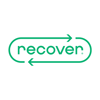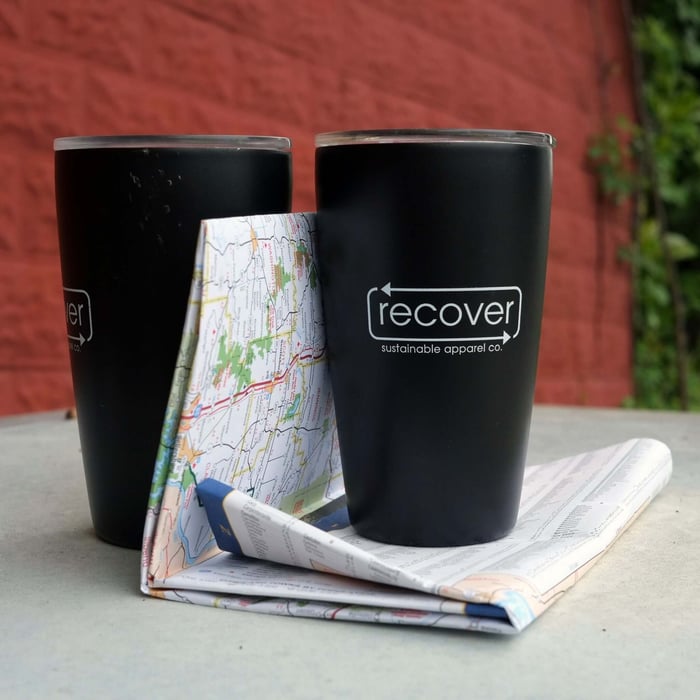Back in the early 1900s, glass was reused and recycled on the spot by local companies and suppliers. Why wouldn’t it be? Durable and easily sanitized, you could trade out an empty glass bottle of milk for a full one with the milkman, sit and drink your summer soda at a shop and return the bottle right then and there, or put down a bottle deposit for beer and recover it on your next round through the store with your bottle return. So, what happened?

Glass bottles began to be mass produced at cheaper costs, chain stores began to spread, beating out smaller, local stores, and larger drink corporations that used glass packaging switched to aluminum and non-returnable glass bottles. After WWII, consumption of products in disposable glass drastically increased in the U.S., and consequently so did glass waste. The public noticed and the national campaign “Keep America Beautiful” pushed for glass and other recycling nationwide in the 1970s. Public, government, and corporations that used glass packaging all united behind it. For decades, recycling glass became the norm.
Now, many recycling centers aren’t collecting glass- Why?
Here’s a nuts and bolts breakdown:
- Glass doesn’t fit in with the single stream recycling of today.
For facilities that don’t have customers separate out glass, glass becomes a contaminant to other recyclables. Glass jars and bottles break in recycling bins, transport, and facilities, and broken glass creates “contamination” of other recyclables, meaning that it jams up systems and creates situations in which certain batches of recycling become unrecyclable due to the mix of broken glass. This is why many curbside recycling pick-ups now ask that you separate glass out of your recycling or drop it at designated drop-offs.
- International policies for buying and accepting U.S. recycling changed.
The international demand and market for U.S. recycling shifted, as more and more countries changed environmental policies to be more stringent. Over 30% of U.S. recycling shipped abroad was ultimately unrecyclable and ended up littering oceans, rivers, and local communities’ land and created pollution harmful to human and environmental health abroad. Countries such as China, Vietnam, and Bangladesh imposed more stringent environmental guidelines for accepting U.S. recycling, and other countries are following suit. This reality brings needed focus on how to effectively and responsibly manage our consumption, recycling, and waste right here at home in the U.S.
- Glass is heavy and costly to transport.
Compared to other recyclables, glass is heavy and therefore, more costly to transport large distances. In current systems, glass recycling programs locally and nationally are considering how to update the system to create more economic incentive to recycle glass. In a 2018 article in Recycling Today, Brittany Prischak, Erie County, Pennsylvania’s Sustainability Coordinator described, “We just need to look at the economics of creating a new collection program in our county and either consider processing it ourselves or transporting it directly to a glass processing company.” Glass can be recycled, but citizen demand for system change to more local glass recycling potential (similar to some practices from back in the day) is the new norm in order to evolve the re-institution of widespread glass recycling.
When it comes to glass…
Why and How to Reduce, Reuse, Recycle, and Re-think...
Why?
Sand mines, which are used to make glass, are at an all time high. According to the 2019 BBC article “Why the world is running out of sand,” while sand is a prevalent resource, its use for glass items, building materials, and even silicon chips in phones and computers is leading to a massive negative impact on communities and the environment. At the current rate, sand is the most consumed resource on the planet besides water and current practices are not sustainable, so reducing, reusing, recycling, and re-thinking the way we use glass is a super sustainability impact individuals and communities can have right now.
How?
- Look up a glass recycling drop off near you if it is not included in your curbside recycling pick-up, or if you don’t have curbside pick-up. In our hometown of Charlotte, there’s often the question of “What do I do with these wine bottles?” Recycle Nation is great resource. You can find glass recycling drop-off locations by looking up “glass recycle drop-off locations near (wherever you are)”, or asking your local recycling center or waste management company where the closest drop-off locations are.
- Purchase less glass, and avoid single-use items in glass when possible by buying in bulk and re-using containers. AKA, get that beer on draft! Enjoy making your own pasta sauce! Lots of possibilities. If needed, seek alternatives (but not single-use plastic), such as aluminum cans. Aluminum is notably efficient to recycle and is widely accepted by recycling facilities.
- Separate glass from your recycling stream. Municipalities that still accept glass in single-stream recycling experience a much lower rate of use-able glass for recycling due to contamination.
- Avoid breaking glass when placing in recycle bins if possible.
- Reuse glass jars for food storage, glasses, and crafts.
Join Recover in working for a sustainable tomorrow, today. Be the impact.






